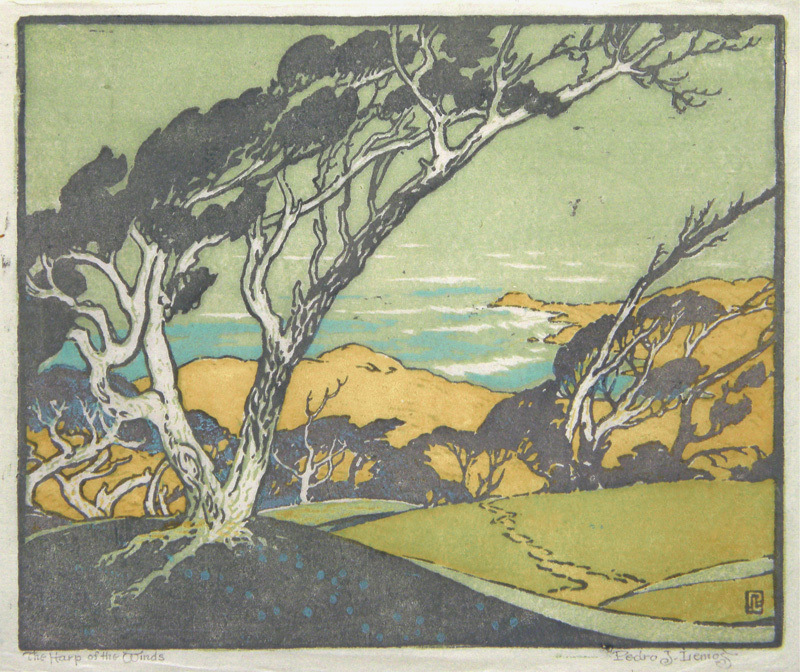
19th, 20th & 21st Century Fine Prints
707-546-7352 · fax 707-546-7924 · web: www.annexgalleries.com · email: artannex@aol.com
The Harp of the Winds by Pedro Joseph de Lemos

The Harp of the Winds
Pedro Joseph de Lemos
Title
The Harp of the Winds
Artist
Pedro Joseph de Lemos
1882 - 1954 (biography)Year
c. 1925
Technique
color block print
Image Size
8 7/8 x 10 5/8" image
Signature
pencil, lower right
Edition Size
not stated
Annotations
titled in pencil, lower left; artist's chop in lower right
Reference
Paper
fine ivory laid paper
State
published
Publisher
artist
Inventory ID
CAAL126
Price
SOLD
Description
This Northern California color woodblock print was done by Pedro DeLemos around 1925. Pedro J. de Lemos is known as a painter, printmaker, architect, illustrator, writer, lecturer, and museum director but he was also an influential theorist and educator. He was born in Austin, Nevada on May 25, 1882, however Lemos grew up in Oakland, California and began his art studies in the Bay Area. In 1900 he was a pupil of Arthur Matthews at the Mark Hopkins Institute and continued his studies as a student of George Bridgman at the Art Students League in New York and Arthur Wesley Dow at Columbia University Teachers College. Returning to Oakland, he set up his studio overlooking Lake Merritt and began teaching at U.C. Berkeley. He also worked as an illustrator and designer and began teaching classes in decorative design and etching at the San Francisco Institute of Art, formerly the Mark Hopkins Institute, in 1911. He was a founding member of the California Society of Etchers, and one of his prints won honorable mention at the Panama-Pacific International Exposition in 1915 for which he was chief organizer of the California print exhibition. He was Professor of Design at Stanford University and was appointed director of the Stanford Museum of Art in 1919. Lemos was editor of School Arts Magazine and produced a series of folios based on his theories of design entitled Applied Art as well as authoring about fifty books on arts and crafts. Lemos was the first president of the Carmel Art Association and his work was exhibited with the California Society of Etchers, the Californa Print Makers, the Palo Alto and Carmel Art Associations, the Chicago Society of Etchers, as well as at the Bohemian Club. His influence was widespead and his achievements were many. He honored in 1943 by his induction as fellow of the Royal Society of Art in London.
